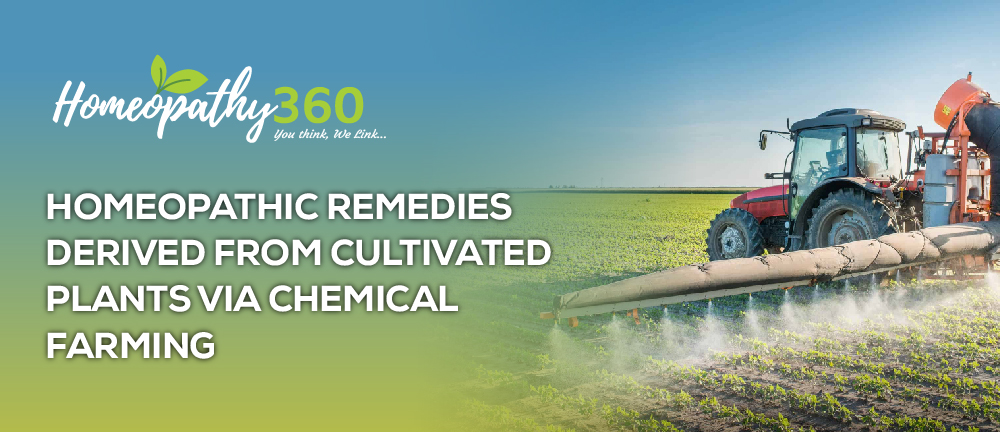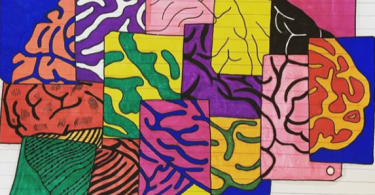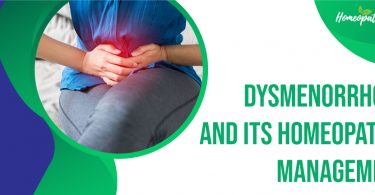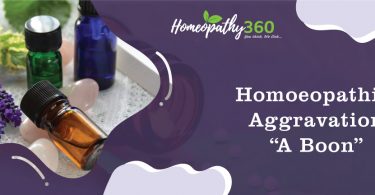
Abstract: Modern chemical based cultivation is negatively affecting the quality and quantity both of pharmacologically important bio-active molecules responsible for the medicinal properties of plants used in homoeopathy. This may result in lower concentrations of main bio-active component from that mentioned for traditional native wild plant resources. Potentisation of these raw materials may have lesser active substance in the prepared potency. As selection of right potency is essential for successful treatment for which homoeopathic aggravation is an indicator, use of such potencies may results in no response or false aggravation. A pre-treatment to increase the right concentration of the bio active molecule in the raw material before potentisation similar to native wild plants is suggested for right doses of drug to cause actual homoeopathic aggravation.
Introduction:-
About 80% of homoeopathic remedies are derived from plants for which native and wild medicinal plants were used traditionally for homoeopathic drug preparations. Presently, most of the important homoeopathic drugs are manufactured by cultivated plants using modern chemicals based farming systems. Recent researches around the world has now established that modern chemical based cultivation is negatively affecting the quality and quantity both of pharmacologically important bio-active molecules responsible for the medicinal properties of plants used in homoeopathy and elsewhere. The most serious negative effects of chemical farming are use of synthetic pesticides which have serious negative effects on soil micro-biota resulting in soil ill-health. The recalcitrant nature of pesticides substances leaves their residua, which are very difficult to eliminate after several washings. Further, pesticides and insecticides have metal and trace elements in their molecules, which may be a part of the pesticide residues and are toxic to environment and biotic life. The combined effect of soil ill-health and pesticide residues may cause different and lower quantities of bio–active components including mineral and trace elements in cultivated plants in comparison to native wild plants. .As metals and mineral as well as trace elements are important raw materials for homoeopathic drugs, use of these chemically cultivated plants for homoeopathic drugs preparation may have lower potencies then presumed to be similar to wild plants. Homoeopathic potentization of these raw materials may have lesser required bio-active substance in the prepared and labeled potency of the remedy than reported in previously used original remedies. A pre –treatment may be helpful to adjust the drug standard as per original materia medica. This can be devised by obtaining the complete bio-chemical and phytochemical profiles of chemically cultivated homoeopathic medicinal plants with the aid of modern analysis tools and after comparison with corresponding profiles of wild native plants1.
Homoeopathic aggravation is a modality in which use of drug initially causes increase in the drug symptoms. Aggravation indicates that the remedy chosen is right but lower doses are needed. Thus, aggravation is an indicator for correct and successful treatment2. In absence of proper doses, either no response or false aggravation may be observed. In present days, homoeopathic aggravation is less, whereas in the time of Dr Hahnemann these were used to be three times more, because Dr Hahnemann selected 30 CH potencies of the medicines in his experiments. The main reason for less homoeopathic aggravation is use of higher potencies of homoeopathic medicines in current times. Apart from this the use of allopathic drugs is common cause for non-manifestation of homoeopathic aggravation because in allopathic treatments symptoms are suppressed. Due to inappropriate doses of drugs prepared from chemically cultivated homoeopathic medicinal plants, following situation may arise2.
Homoeopathic medicine, which has partial symptoms can also cure the patient because an aggravation is very less and will not cause any disorder in the vital force. If after giving the medicine in a new disease of a patient, there is a partial improvement along with the increase in disease, then both the medicine and its quantity are correct. In such a situation, the doctor should keep on giving placebo only till the patient’s disease is free. Sometimes in chronic diseases of a patient, due to wrong selection of medicine or incorrect determination of its quantity, due to any other obstacle, slowing down of drug action, due to the slow response of the patient, any kind of aggression does not appear in the patient’s body, in such a situation, case re-taking should be done. Generally, after giving medicine in any patient, the disease continues for some time but in some patients it becomes severe after staying for a long time, the main reason for this is that the patient comes to the doctor after the disease progresses or the vitality decreases. Due to which changes in its relevant symptoms start, the doctor should not repeat the medicine. If, after some time, any improvement is not seen then the patient should be given palliative treatment. If a patient gets immediate relief after given a homoeopathic medicine, but in a short time an aggravation appears and lasts for a long time, In these situations, again case taking and select the appropriate medicine in 200CH potency. So possibly the patient is suffering from chronic disease or the chosen medicine has suppressed the disease or the drug has shown adverse effects. If correction appears for a short time by a given drug in a patient, then repeat the same drug in low potency for such patients or the disease is palliated by LM potency of the same drug. If the symptoms of the disease improve after giving homoeopathic medicine in a patient, but there is no increase in his vitality, so it is clear that there is symptomatic changes in the patient and a complete cure is not possible. It is therefore necessary to select proper lower dose of remedy as per classical Dr Hahnemann method. This may be achieved by the help of modern analytical technology to find phytochemical and biochemical profiles of chemical cultivated homoeopathically medicinal plants and adjusting the concentration of required bio active molecules similar to wild native plants by a simple pre-treatment step3.
Conclusion:
From the above mentioned facts, it is concluded that homoeopathic aggravation is an important indicator for choice of right remedy and thus is helpful to select the successful treatment protocol. In comparison to Dr Hahnemann’s time, the homoeopathic aggravation is very less due to use of higher potencies drugs. As homoeopathic aggravation helps in successful treatment for which low doses of remedy is being used. Therefore, as per Dr Hahnemann, low doses of remedies are required which can be prepared by potentisation of correct and sufficient quantities of medicinally important bio-molecules similar to native and wild plants. Use of chemically cultivated plants as raw material for homoeopathic remedies may have low and different active bio-molecules than the wild native plants, and thus homoeopathic remedies prepared from these resources may have risk of no-response or false homoeopathic aggravation. It is suggested that complete bio-chemical and phytochemical profiles of the homoeopathic medicines chemically cultivated raw materials may be obtained and should be compared with the corresponding wild native plants. Based upon these comparison results, some pretreatments may be devised to correct and balance the active components of these chemically cultivated plants with the wild plants to induce correct homoeopathic aggravation as per classical Hahnemann method.
References:
1. Haron MH1, Tyler HL2 3, Chandra S1, Moraes RM1, Jackson CR2, Pugh ND4, Pasco DS5 6, Plant microbiome-dependent immune enhancing action of Echinacea purpurea is enhanced by soil organic matter content. Sci.Rep.2019,Jan15;9(1):136.doi 10.1038/s 41598-018-36907x. Available from:
https://pubmed.ncbi.nlm.nih.gov/30644442/
2. Isbell WR. Available from
https://isbellmedicalpractice.com/articles/homeopathy/homoeopathicaggravation.html
3. Hahnemann S, Organon of Medicine. 5th & 6th Edition, Translated from the 5th Edition With An Appendix By R.E. Dudgeon, M.D. With Addition And Alterations As Per 6th Edition translated by William Boericke, M.D. and Introduction By James Krauss, M.D. B.Jain Publishers Pvt.Ltd. Reprint Edition: 2003, 2004. p. 96-99.
https://www.abebooks.co.uk/9788131903117/Organon-Medicine-5th-6th-Edition-8131903117/plp
About the author
Dr Amit Kumar Vyas has completed his B.H.M.S. degree from Dr. M.P.K. Homoeopathic Medical College & Research Centre; Jaipur, Rajasthan in the year 2008. Presently, along with homeopathic practice, according to homeopathic pharmacopoeia, doing independent research work on Thar Desert Plants. He is doing this research work under the guidance of his father.





